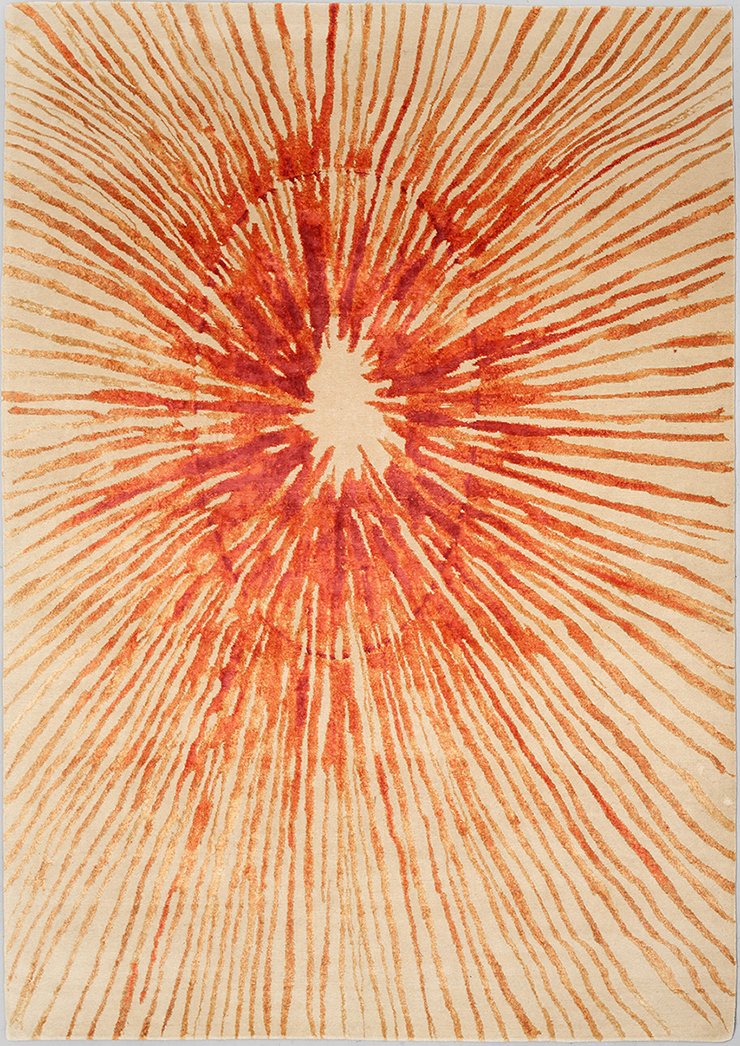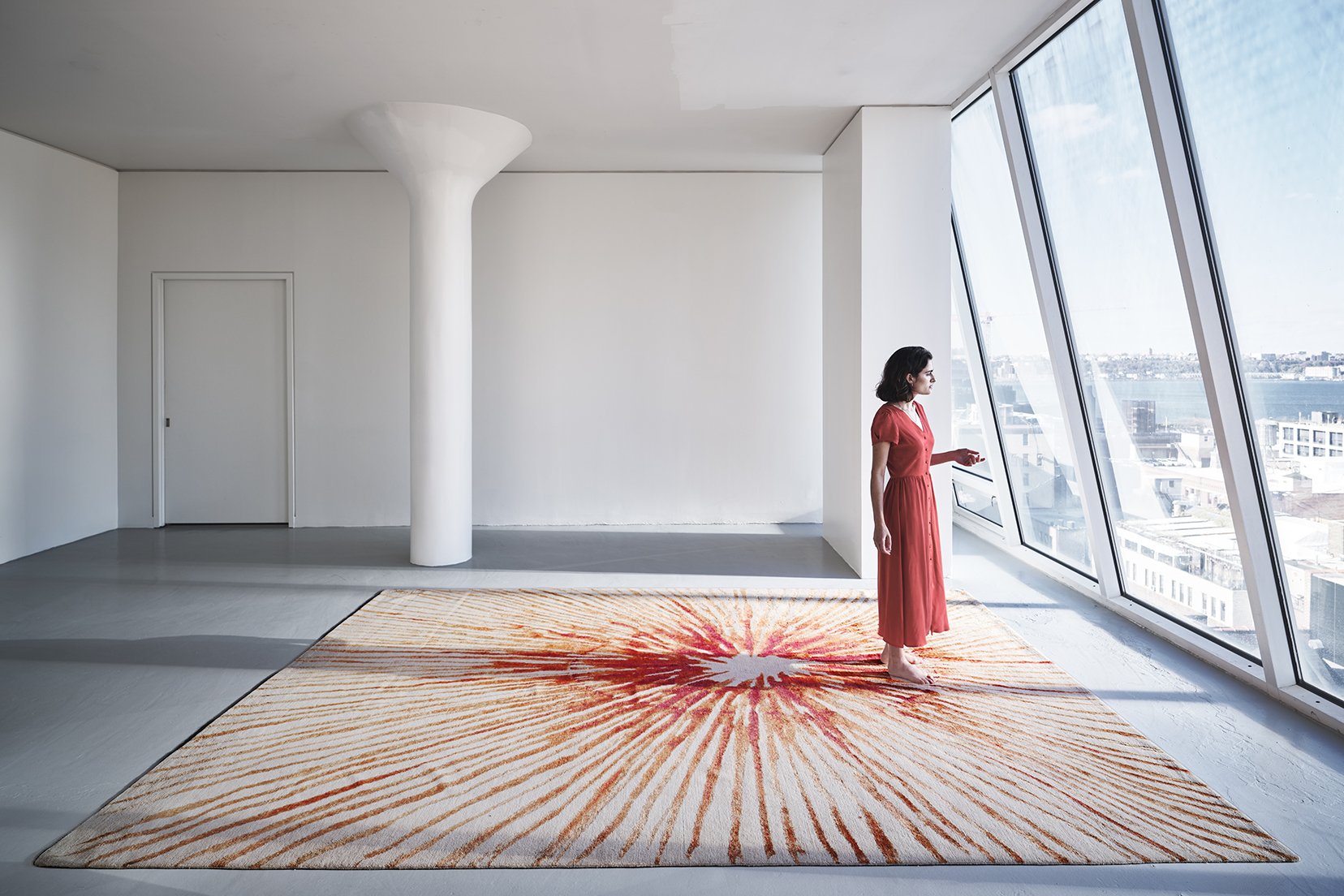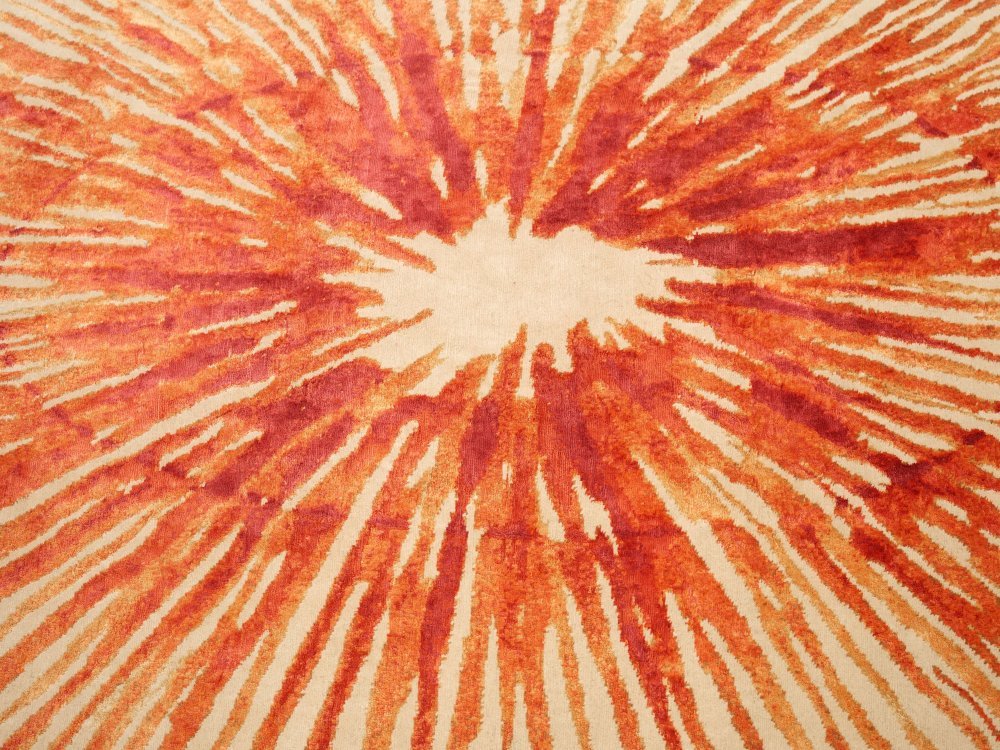Louise Bourgeois
Ray Of Hope
2006-20022, 144 x 108 inches, 150 knots per sq in, 15 ply wool/silk, 21 colors, edition of 12 + 2 APs, sustainably hand-knotted in Nepal by artisan weavers
© The Easton Foundation/Licensed by VAGA at Artist Rights Society (ARS) NY, Photo: Sarah Muehlbauer, Courtesy Hauser & Wirth
BravinLee Editions is delighted to announce the release of Ray of Hope, made in collaboration with Louise Bourgeois’s foundation, The Easton Foundation.
Louise Bourgeois came from a long line of tapestry restorers and grew up in a bustling atelier, where she witnessed the washing and dyeing of fibers for the restoration of old tapestries. Occasionally, she assisted by drawing in missing areas of the scenes for weavers to fill in with thread. In the final two decades of her life, Bourgeois seemingly revisited her past by using the textiles she had long safeguarded as materials for her art. Bourgeois interpreted weaving and sewing as reparative acts that could metaphorically mend fractured relationships and soothe psychological trauma, themes that long preoccupied her. During this highly inventive period, she hung nightgowns and dresses in her installations, sewed and stuffed fabric busts that grimace in pain, and printed etchings on monogrammed handkerchiefs. Bourgeois harnessed the tactility and sensory nature of fabric to great effect in these late works.
This image is selected from a suite of 24 watercolor and pencil drawings on embossed paper titled Ray of Hope (2006). At the same time she was working in fabric, Bourgeois made hundreds of red gouache drawings on the themes of nature, pregnancy, and motherhood. Here, Bourgeois exercised tight control over the lines, while in other works, she allowed the watery blood-red paint to move freely on the surface of damp paper. Bourgeois saw abstraction as a means of understanding and coping with her feelings and used verbs like “calming,” “caressing,” or “stabbing” to describe strokes. Rays of hope burst from the center of the composition, strong and insistent, for as Bourgeois remarked, “Red is an affirmation at any cost—regardless of the dangers in fighting—of contradiction, of aggression. It’s symbolic of the intensity of the emotions involved.”
Louise Bourgeois was born in Paris in 1911. Although she lived in New York from 1938 until her death in 2010, much of her inspiration was derived from her early childhood in France. Using the body as a primary form, Bourgeois explored the full range of the human condition. From poetic drawings to room- size installations, she expressed psychological states through a visual vocabulary of formal and symbolic equivalents. Memories, sexuality, love, and abandonment form the core of her complex oeuvre. Bourgeois’s work appears in collections worldwide, and in 2007-2008 she was the subject of a major travelling retrospective organized by the Tate Modern in London and the Centre Georges Pompidou in Paris. Recent solo exhibitions have been on view at the Hayward Gallery, London; Kunstmuseum Basel, Switzerland; Gropius Bau, Berlin; and the Metropolitan Museum of Art, New York. Shows at the Nasjonalmuseet, Oslo, and the Belvedere, Vienna, are forthcoming.
BravinLee Editions is a proud member of GoodWeave. The GoodWeave label is the best assurance that no child, forced or bonded labor was used in the making of BravinLee carpets, and it also means your purchase supports programs that educate children and improve working conditions for adults in producer communities.
BravinLee Rugs are made sustainably and ethically in Nepal in the Kathmandu Valley. The mill, with whom BravinLee has worked exclusively for 15 years, is a leader in environmental and worker’s rights initiatives. Employees receive paid-time off, up to 45 working days in a year + 15 national holidays, 18 personal days and 12 days sick leave. They have flexible working hours and work-from-home options, free health insurance for all employees, free education for children of lower-income employees, paid maternity leave up to 2 months, and a 100% employer matching provident fund. The mill was founded by a woman and started with a 100% female workforce, even today, they hire more women than men.
On environmental initiatives, the mill’s carbon footprint is very low as they do not use any heavy machinery for the production of the rugs. The electricity is clean, since all electricity generated in Nepal is via hydro (not coal, not diesel, not nuclear). Additionally, the mill generates its own energy with solar panels and windmills in an attempt to go carbon neutral. The dye works uses solar sourced electricity for all dyeing, with no more Dickensian, sooty, firewood heated boilers. Finally, the rug washing does not use any harsh chemicals, just soap and water.
When you purchase and enjoy a BravinLee rug, you have supported a sustainable, ethical and just form of commerce.
© The Easton Foundation/Licensed by VAGA at Artist Rights Society (ARS) NY, Photo: George de Castro Day, Courtesy Hauser & Wirth
© The Easton Foundation/Licensed by VAGA at Artist Rights Society (ARS) NY, Photo: Sarah Muehlbauer, Courtesy Hauser & Wirth
Short film created by: Mia Fermindoza, Michelle Geffer and Charlotte Bravin Lee


